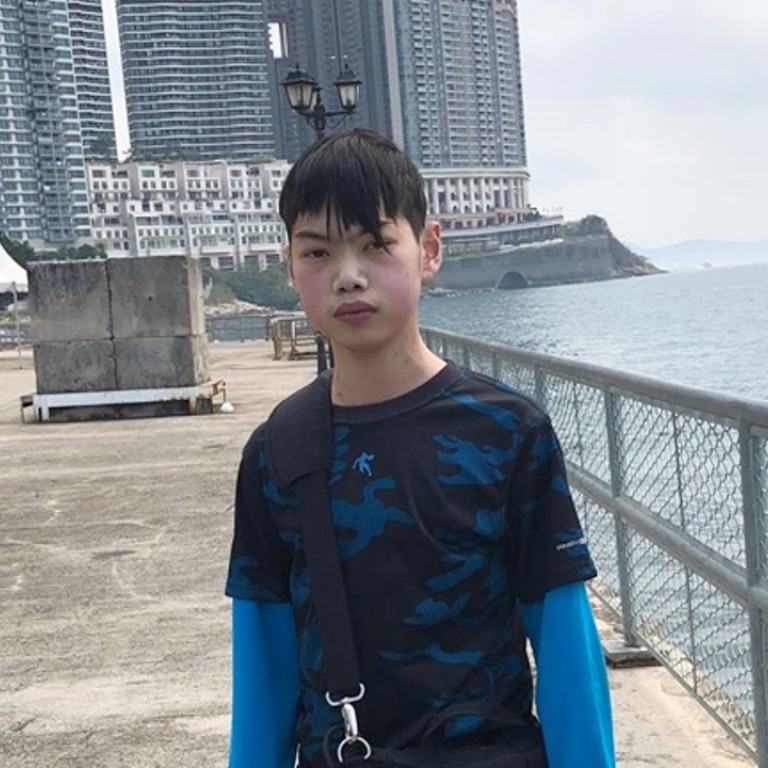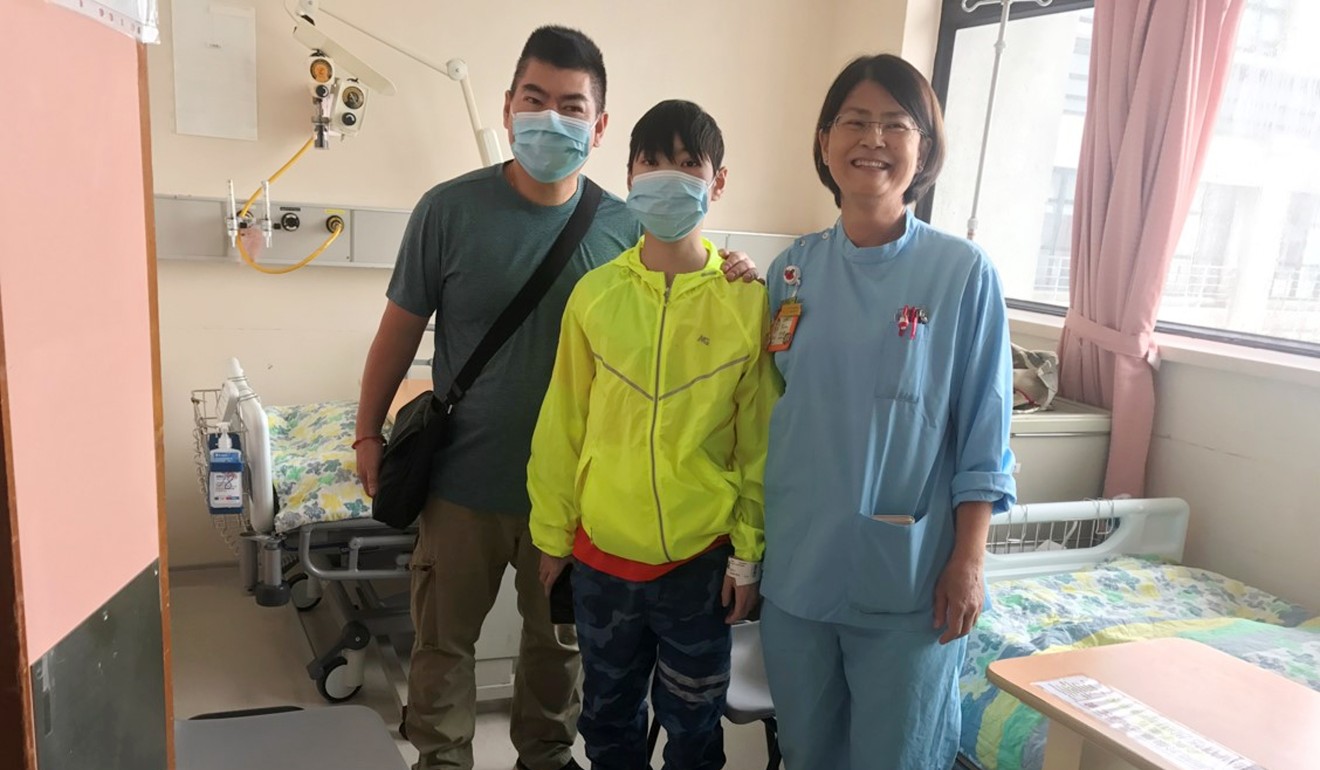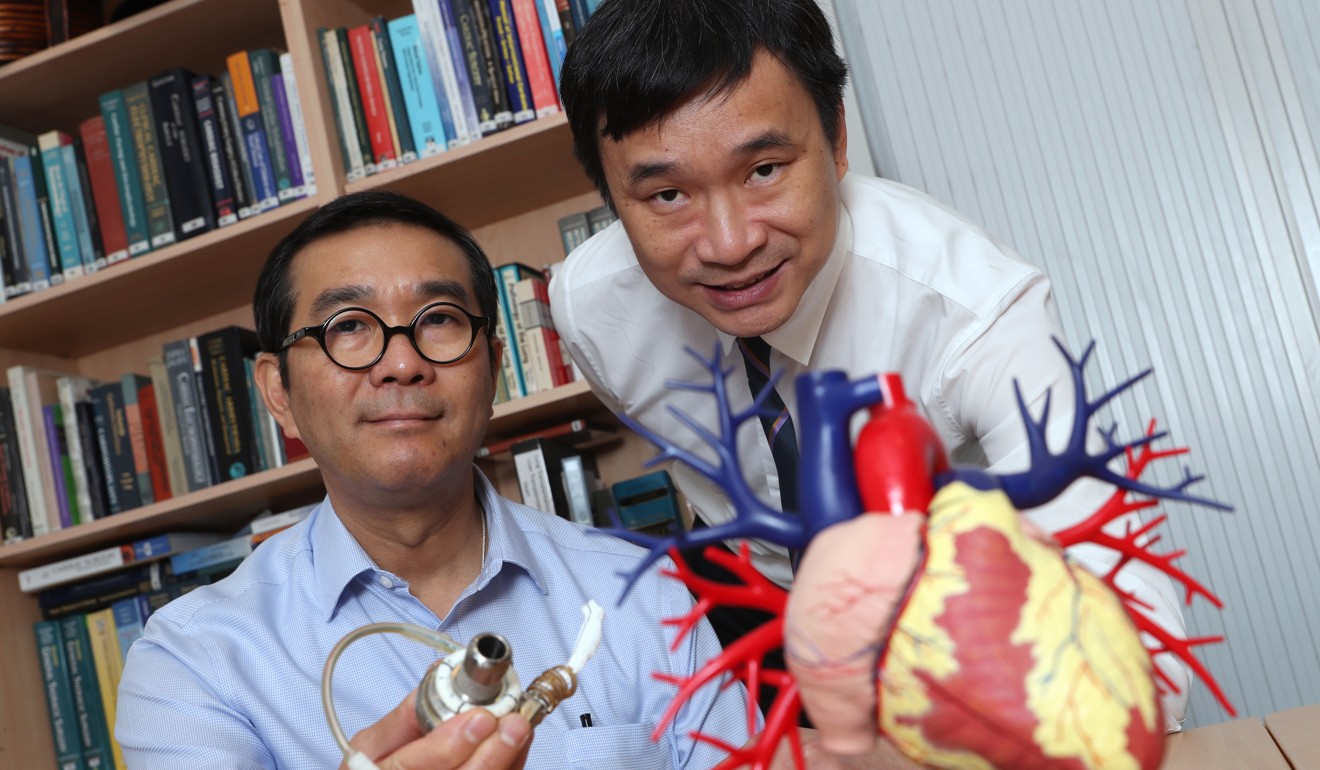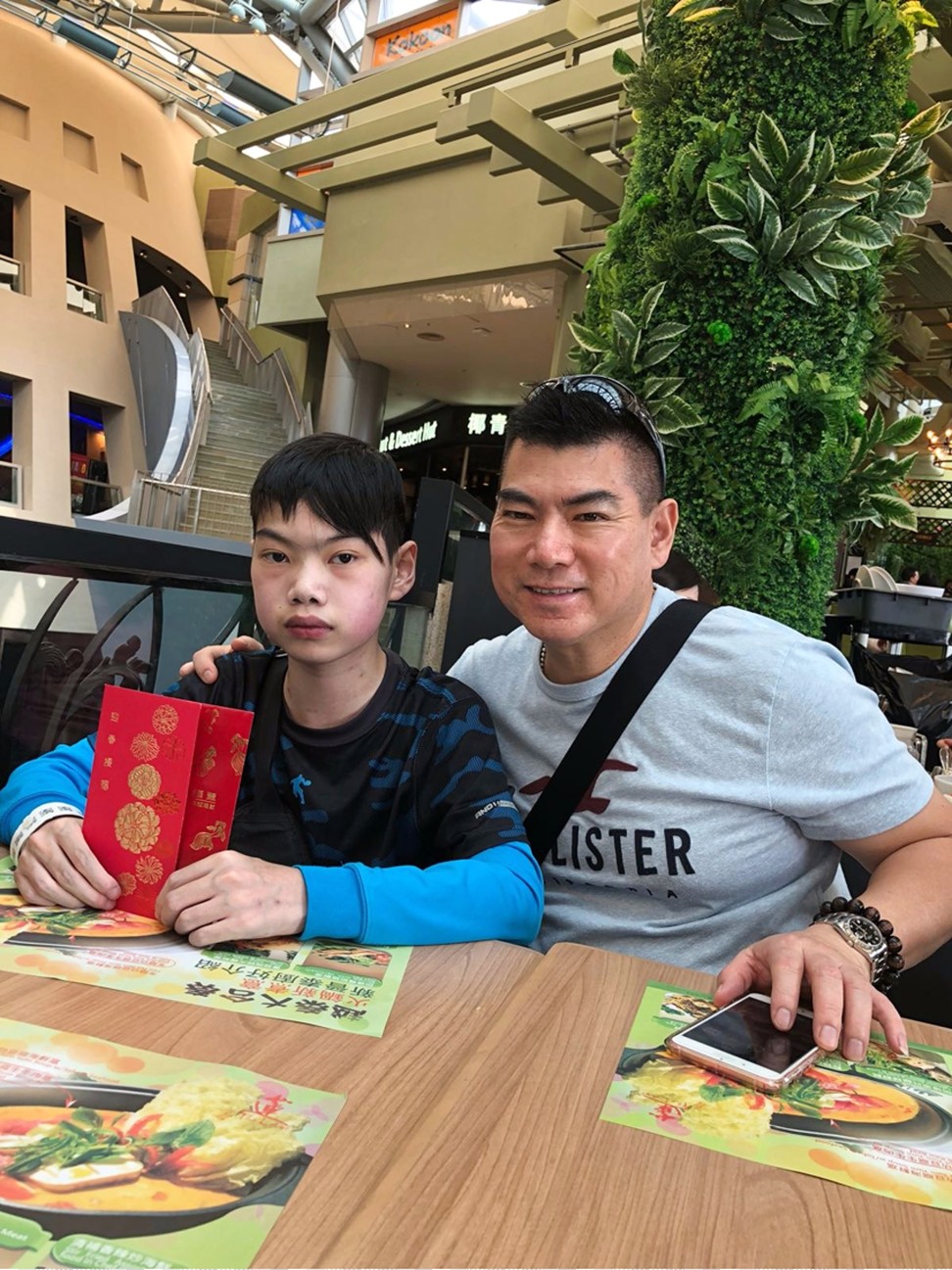
‘Miracle boy’ with heart defect who got Hong Kong’s first ventricular assist device transplant enjoys new life
Landmark surgery allows 12-year-old to return to school as he waits patiently for organ donation that might be years away
Carrying a black canvas bag and wearing a dark blue shirt, Yeung Chin-kwun looks like any other boy hanging out in the park. Except the bag contains five pounds of medical equipment, and the young heart underneath his shirt cannot beat by itself.
The 12-year-old Hongkonger has a mechanical pump made of metal – a ventricular assist device, or VAD – implanted in his chest.
“He was born with heart disease,” his father, who declines to be named, explains. “It’s a miracle that he’s still alive at this point.”
“Now my son can leave the hospital and walk on the streets. I am so thankful to the medical crew that helped him.”

With his surgery in January, Yeung became the first person in Asia with single ventricle disease to successfully receive a VAD implant. The condition occurs when one of the heart’s two ventricles does not develop fully.
The operation was carried out by a medical team comprising 10 doctors and nurses at Queen Mary Hospital. It enables Yeung to live like a normal boy while waiting for a donated heart for another transplant, which could take place years from now.
Before this and from the tender age of one month old, Yeung had undergone five heart-related operations. Another one would always be dangerous, according to Dr Timmy Au Wing-kuk of the cardiothoracic surgery department at Queen Mary.

“It was never done in Hong Kong’s history of open-heart surgeries,” Au says of the VAD implant. “The risk of death was as high as 20 to 30 per cent.”
Au notes that a rate of 7 per cent and above is generally considered high-risk.
Yeung’s paediatric cardiologist, Dr Lun Kin-shing, has followed the boy’s condition since he was a newborn. He describes Yeung as “a shy kid”.
“He seldom talks and never says no to doctors.”
Seven months ago, when doctors decided to perform the milestone surgery, Yeung’s condition had deteriorated to a point that he could die at any minute, Lun recalls.
“He was aware that something was wrong. Every day he was begging his father to take him home.
“When we talked to him about the operation, he nodded his head. I guess he knew it was the only way they could take him home,” Lun adds.
Au attributes the success of Yeung’s surgery to the teamwork of everyone involved in the operation. He also cites the hospital’s resources as well as the trust between medical staff and Yeung’s family built over an extended period of time.
“We have nurse specialists who have been following Chin-kwun’s condition throughout his 12 years,” Au notes. “A sense of closeness is very important, especially when it comes to high-risk patients.”
There was no way he could wait for a heart donation
Heart transplant cases often translate into long-term relationships between the patient’s family and medical staff throughout the uncertain waiting time for an organ donation. For the young, the experience can be even more intense.
“There are simply not many children’s hearts being donated,” Au says.
“We knew that if we failed in this surgery, it was very possible that Chin-kwun wouldn’t get another chance,” Lun recalls. “And there was no way he could wait for a heart donation.”
While heart transplants started in Hong Kong in 1992, it was not until 2009 that the surgery involved a child patient, Au says. Since then, only seven children in the city have received heart transplants. All the surgeries were done at Queen Mary, the only local hospital to perform them.
Statistics from the Department of Health show that 125 hearts have been donated since 2007, but there are still 49 people waiting for one at the moment.
Why Hong Kong’s first hole-in-heart surgery in 1968 was ‘years behind China’
“Of course he can go travelling, as long as the airline allows him to,” Au says. “He can even do some less intense sports if he feels like it.”
Yeung’s father says his son is still shy, and he believes his son needs to further build his mental strength. But he hastens to add: “I’m just thankful that everything is going well now.”


